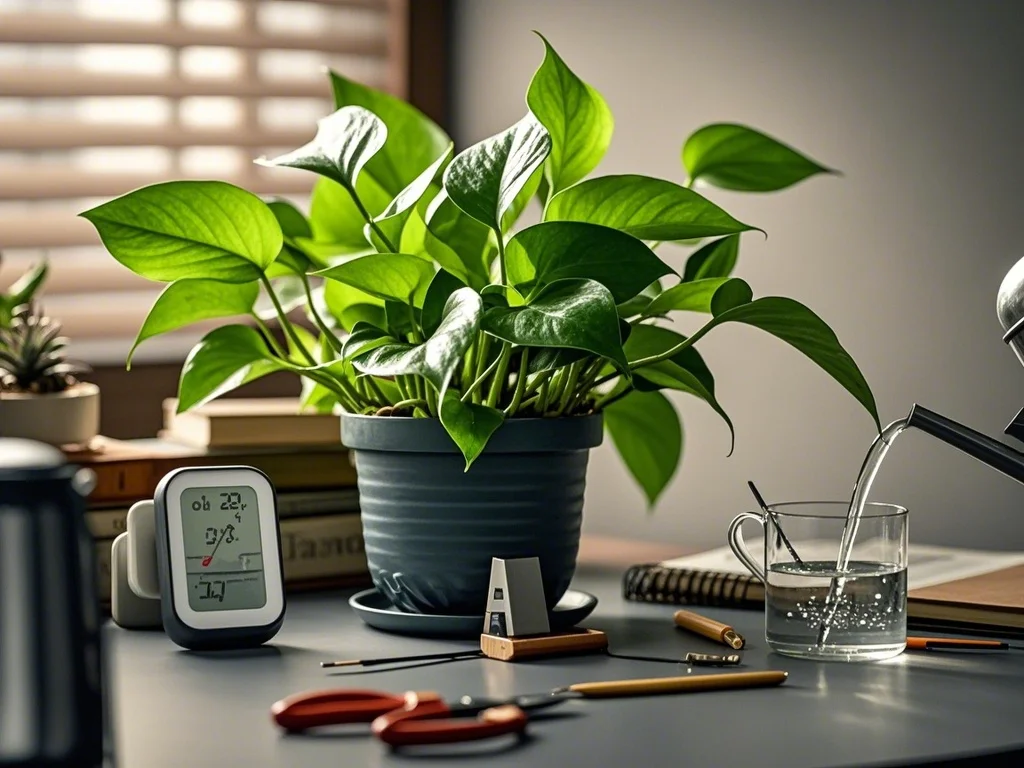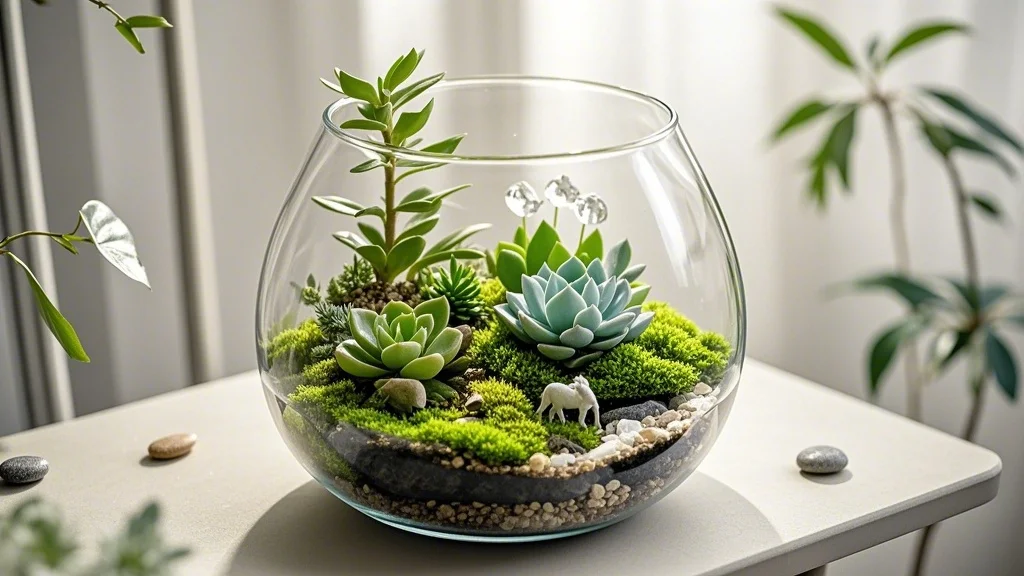Shared office plants can transform a workspace, boosting morale, improving air quality, and creating a more inviting environment. However, caring for communal greenery requires coordination and commitment. This guide will help you establish and maintain a successful plant care committee in your workplace.
Contents
Establishing a Plant Committee
1. Recruit Volunteers
- Send out a company-wide email inviting plant enthusiasts
- Post sign-up sheets in common areas
- Highlight the benefits of participating (e.g., learning new skills, socializing)
2. Define Roles and Responsibilities
- Coordinator: Oversees the committee and delegates tasks
- Waterers: Responsible for regular plant hydration
- Pruners: Handle trimming and shaping
- Fertilizer specialists: Manage nutrient schedules
- Pest monitors: Watch for and address insect issues
3. Create a Care Schedule
- Develop a rotating schedule for daily, weekly, and monthly tasks
- Use shared calendars or apps to track responsibilities
- Ensure coverage during holidays and vacations

Selecting Suitable Office Plants
1. Consider Light Conditions
- Low light: Snake plants, ZZ plants, pothos
- Medium light: Peace lilies, philodendrons, dracaenas
- Bright light: Fiddle leaf figs, rubber plants, succulents
2. Assess Maintenance Requirements
- Choose low-maintenance plants for busy offices
- Consider drought-tolerant species to reduce watering frequency
- Avoid plants with high humidity needs unless you can provide proper care
3. Factor in Allergies and Sensitivities
- Survey employees for plant allergies or sensitivities
- Avoid plants with strong fragrances in shared spaces
- Select non-toxic varieties if there are concerns about accidental ingestion
Essential Care Tasks
1. Watering
- Develop a watering chart based on each plant’s needs
- Use moisture meters to avoid over or under-watering
- Implement a system for marking when plants have been watered
2. Lighting
- Rotate plants regularly to ensure even light exposure
- Consider supplemental grow lights for low-light areas
- Adjust blinds or shades to protect plants from harsh direct sunlight
3. Fertilizing
- Create a fertilization schedule based on plant types and seasons
- Use a balanced, water-soluble fertilizer for most office plants
- Reduce fertilization in winter when plant growth slows
4. Pruning and Grooming
- Regularly remove dead or yellowing leaves
- Trim overgrown plants to maintain shape and size
- Dust leaves monthly to improve photosynthesis and appearance
5. Pest Management
- Inspect plants weekly for signs of pests
- Use non-toxic methods like neem oil or insecticidal soap for treatment
- Quarantine affected plants to prevent spread of infestations
Tools and Supplies
1. Essential Equipment
- Watering cans or bottles
- Pruning shears
- Moisture meter
- Spray bottle for misting
- Leaf shine cloth
2. Plant Care Products
- All-purpose indoor plant fertilizer
- Neem oil or insecticidal soap
- Pebble trays for humidity
- Pot saucers to catch excess water
3. Record-Keeping Materials
- Plant care log book
- Labels for plant pots
- Dry-erase board for schedules
Organizing the Plant Care Area
1. Designate a Central Location
- Set up a plant care station in a convenient, accessible area
- Store all supplies and tools in this location
- Post care instructions and schedules nearby
2. Create a Plant Map
- Develop a floor plan showing the location of each plant
- Include plant names and basic care requirements
- Update the map as plants are added or moved
3. Implement a Communication System
- Use a shared digital platform (e.g., Slack channel, group chat)
- Set up a physical bulletin board for announcements
- Encourage members to share observations and concerns
Training and Education
1. Initial Orientation
- Conduct a workshop on basic plant care techniques
- Provide hands-on training for watering, pruning, and pest identification
- Review the committee’s structure and individual responsibilities
2. Ongoing Learning
- Organize monthly “Lunch and Learn” sessions on specific plant topics
- Share online resources and articles about indoor gardening
- Invite local experts for occasional guest presentations
3. Troubleshooting Guide
- Create a reference guide for common plant problems
- Include photos of pest damage and nutrient deficiencies
- Outline steps for addressing various issues
Motivating the Committee
1. Recognize Contributions
- Highlight individual efforts in company newsletters
- Create a “Plant Champion of the Month” award
- Offer small incentives like plant cuttings or gardening books
2. Foster Team Spirit
- Organize social events for committee members
- Create team t-shirts or badges
- Encourage friendly competition between floor or department plant teams
3. Track and Celebrate Progress
- Document plant growth and improvements with before/after photos
- Set goals for expanding the office plant collection
- Celebrate milestones like one year of successful plant care
Addressing Challenges
1. Dealing with Plant Loss
- Conduct a post-mortem to understand what went wrong
- Use failures as learning opportunities for the committee
- Replace lost plants promptly to maintain morale
2. Managing Conflicting Opinions
- Establish a decision-making process for plant care disputes
- Encourage open dialogue and compromise
- Consult external experts when necessary
3. Handling Busy Periods
- Create a backup care plan for times of high workload
- Consider hiring a professional service for occasional deep cleaning and care
- Rotate responsibilities to prevent burnout
Expanding the Program
1. Introducing New Plants
- Survey employees for plant preferences
- Gradually add new varieties to diversify the collection
- Start a “Plant of the Month” feature to educate about new additions
2. Creating Plant-Centric Events
- Organize plant swaps or propagation workshops
- Host seasonal decorating events using office plants
- Arrange field trips to local botanical gardens or nurseries
3. Extending Beyond the Office
- Develop a program for employees to “foster” plants at home
- Create a digital plant care guide for remote workers
- Explore partnerships with local community gardens
Measuring Success
1. Employee Satisfaction Surveys
- Conduct regular surveys about the office plant program
- Gather feedback on plant selection and placement
- Ask for suggestions for improvement
2. Plant Health Assessments
- Perform quarterly evaluations of overall plant health
- Track improvements in air quality and humidity levels
- Monitor reduction in pest incidents over time
3. Cost-Benefit Analysis
- Calculate the investment in plants and supplies
- Estimate the value of improved employee well-being and productivity
- Compare the cost of the program to professional plant service alternatives
Conclusion
A well-organized plant care committee can transform an office environment, creating a greener, healthier, and more enjoyable workspace for all. By following these guidelines, your team can successfully manage shared office plants, fostering a sense of community and connection to nature in the workplace. Remember, the key to a thriving office plant program lies in consistent care, open communication, and a shared passion for bringing the outdoors inside.









